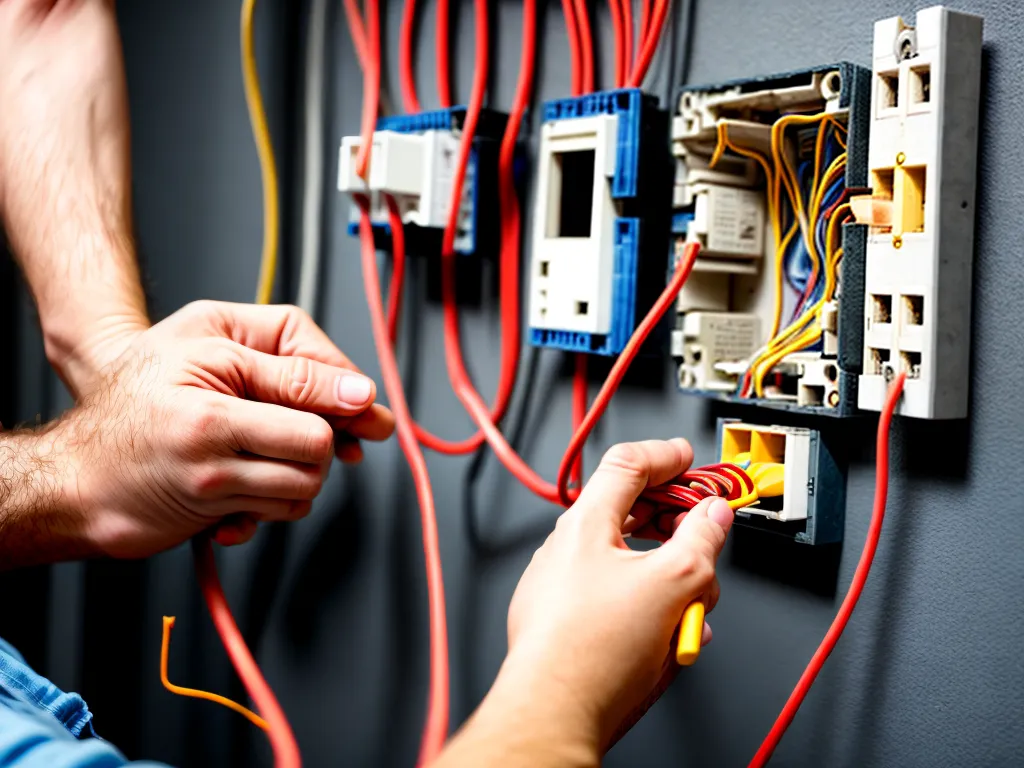
How to Test Home Electrical Wiring Yourself
Introduction
Testing your home's electrical wiring is an important part of home maintenance. Faulty wiring can present serious safety hazards like electrical fires or shocks. While you can always hire an electrician, testing the wiring yourself can save time and money. With proper precautions, the right tools, and a methodical approach, homeowners can check their wiring for problems.
Safety Precautions
Before testing any wiring, I take safety precautions:
-
I turn off the main circuit breaker to cut power to the whole house. I double check with a voltage tester that the power is off.
-
I wear insulated gloves and shoes in case I encounter any live wires.
-
I have a fire extinguisher on hand in case a wire sparks and ignites.
-
I don't work on wiring alone - I have someone with me in case of emergency.
-
I check that all my testing tools are properly insulated and rated for the circuit voltage.
Testing Equipment Needed
To properly test home electrical wiring, I gather some basic equipment:
-
Voltage tester - To confirm power is off before working on any circuits
-
Outlet tester - For detecting common wiring faults at outlets
-
Multimeter - For measuring voltage, current, and resistance
-
Socket tester - For checking wiring continuity of individual socket terminals
-
Cable tester - For verifying connections between in-wall cables and outlets/switches
-
Circuit tracer - Identifies which circuit breaker controls each cable run
-
Insulated tools - Like screwdrivers, wire cutters, wire strippers
-
Ladder - For accessing wiring connections in the attic or on the ceiling
Testing the Wiring Circuits
To thoroughly test my home's electrical wiring, I follow these steps room by room:
1. Check all outlets and switches
-
I use an outlet tester plugged into each outlet to check for miswires. It detects common faults like open grounds, reversed polarity, or hot/neutral swaps.
-
I flip each light switch on and off to ensure it operates properly.
-
I check for loose outlets or switches, cracks, scorch marks, or buzzing which can indicate problems.
2. Verify continuity of wiring runs
-
I use a socket tester at outlets and cable tester for runs to switches, testing that each wire terminal connects properly.
-
I check wiring continuity circuit by circuit using a multimeter or cable tester.
3. Check condition of wires, boxes, panels
-
I inspect the insulation on wiring for cracks or burns. Damaged insulation can expose live conductors.
-
I check electrical boxes for proper grounding, loose connections, or overheating.
-
I examine the circuit breaker panel for corrosion, overheating, or unsecured components.
Checking Special Circuits
Certain appliance circuits need special attention:
Kitchen/bathroom circuits - I check the GFCI outlets using the test and reset buttons to ensure proper function.
A/C wiring - I verify the dedicated air conditioner circuit for voltage drop issues when the A/C turns on.
Large appliance circuits - I conduct an electric load test for these high-power circuits to catch any loose or corroded connections.
When to Call an Electrician
If I encounter any of the following, I call a licensed electrician:
-
Wiring that overheats, sparks, or emits burning smell
-
Signs of knob-and-tube wiring
-
Frequent tripped circuit breakers or blown fuses
-
No ground wires to outlets
-
Melted, damaged, or punctured wiring insulation
-
Moisture or corrosion in boxes, outlets, switches
-
Any signs of unsafe or dangerous wiring conditions
Conclusion
Testing home electrical wiring doesn't require an electrician if you take proper safety steps. With the right equipment and methodical approach, I can check for and identify any hazardous wiring faults. Paying attention to warning signs lets me know when to call a pro. Staying safe and catching problems early keeps my home's electrical system running safely.